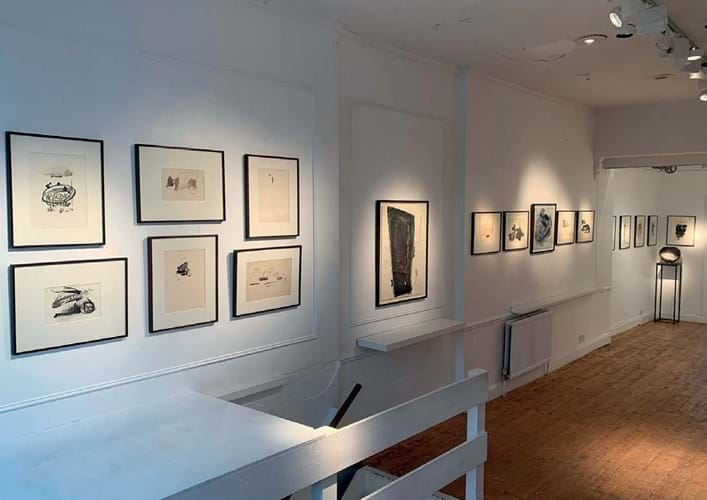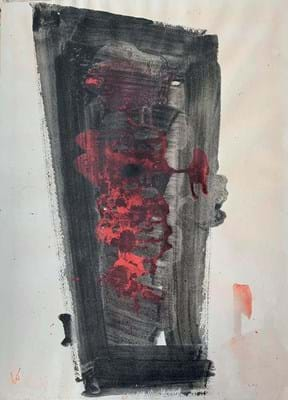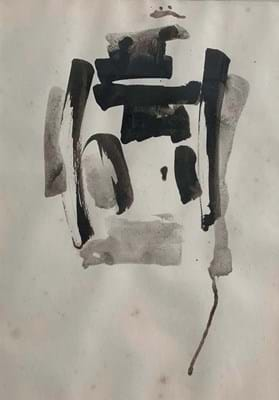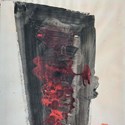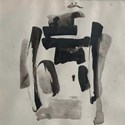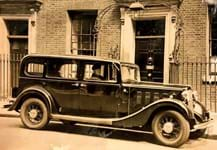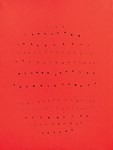Though widely celebrated as an arts educator, Johnstone also has a place in the market as an artist in his own right. Influenced by the bold compositions of the US Abstract Expressionists and the automatic drawings practices of the Surrealists, he was among the first British artists to break away from representational art.
In the selling exhibition Seventy Years of Looking (named for the quote above), Lillie Road dealer Henry Saywell focuses on the later part of Johnstone’s career, offering a collection of his Abstract ink brush paintings from the 1970s. Running at the Fulham gallery until July 24, the show is held in association with Michael Jette Fine Art.
“In his lifetime Johnstone was very well known,” Saywell tells ATG. “He now has works in the Tate and the National Galleries of Scotland, but it’s easy to forget how ahead of his time he was.” Today, Saywell adds, “he’s mildly been forgotten”.
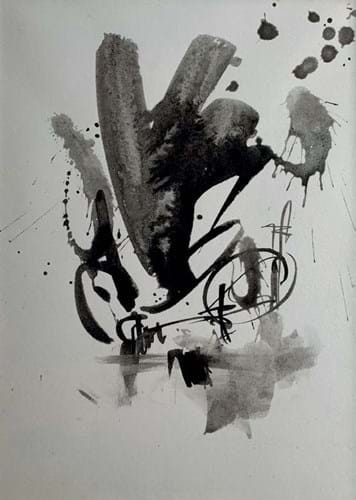
Untitled ink brush drawing by William Johnstone, c.1970, 13 x 9in (34 x 24cm), £950 at the Henry Saywell gallery.
Art school
Born into a farming family in Denholm in the Scottish Borders, Johnstone gave up the agricultural life and went to art school after the First World War. He travelled to the US in the 1920s where he taught and encountered Native American cave paintings, which inspired his earliest ink drawings in the 1930s.
During the Second World War he served as principal at Camberwell College of Art from 1938-46, moving on to the same role at Central School of Arts and Crafts (later merged with St Martin’s) from 1947-60.
He employed methods from the Bauhaus and brought leading artists – such as Alan Davie, Eduardo Paolozzi and Victor Pasmore – to work at the institutions, ultimately receiving an OBE for his contributions to art education in 1954.
Six years later he retired to Scotland to return to farming and concentrate on his own painting, embarking on the most productive period of his artistic career.
The works at Saywell’s gallery, all made c.1970, reflect Johnstone’s interest in the unconscious mind and its engagement with the body. Many of the ideas that he worked with when creating pieces such as those in the show, he also wrote about in his book Child Art to Man Art.
Major sales
Since his death there have been two major sales of his works at Christie’s: one of his studio organised with his family in 1990 and another several years later following the death of one of Johnstone’s major collectors.
The strength of these sales, according to Saywell, was proof of a market for the painter given the right supply of high-quality works.
The dealer adds that there has been active interest in his show already from buyers. “There’s a very modern element to these works, but they’ve been framed very classically,” he says. “The few we’ve sold so far couldn’t have gone to a wider range of collector.”
Johnstone was a champion of art from his native land and the buyer base remains strong among collectors of Scottish art. The picture in the show, for example, comes from a private collection in Edinburgh.
The exhibition has also attracted international interest, with enquiries coming from as far afield as Johnstone’s one-time home of California.
The show was due to launch just as lockdown started, so ran online only until reopening earlier this month. It is now available on the website or at the gallery by appointment.


